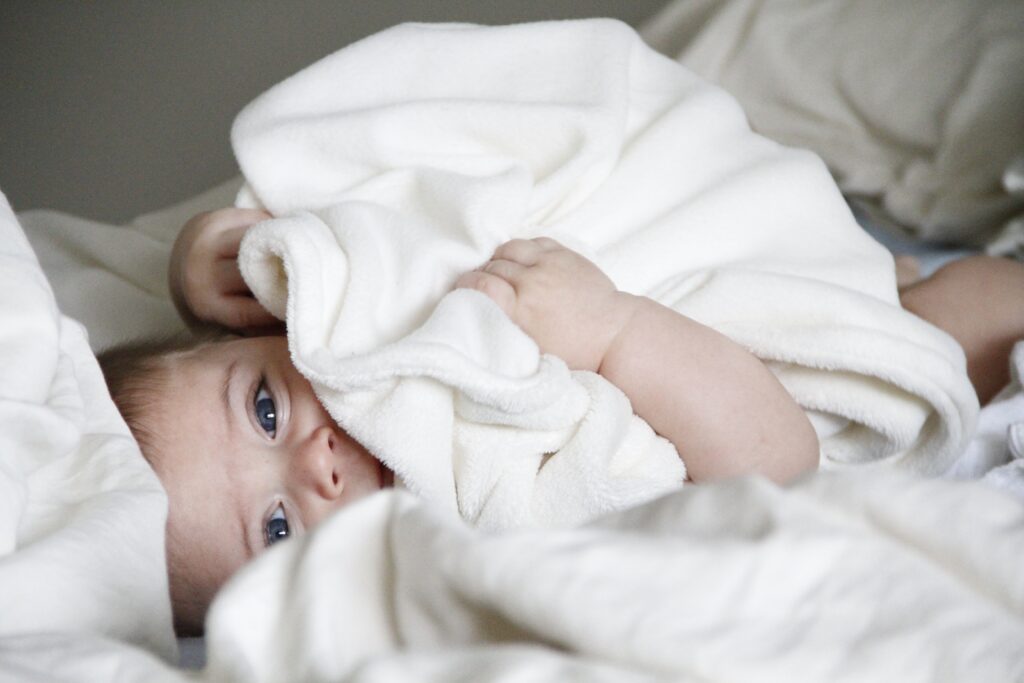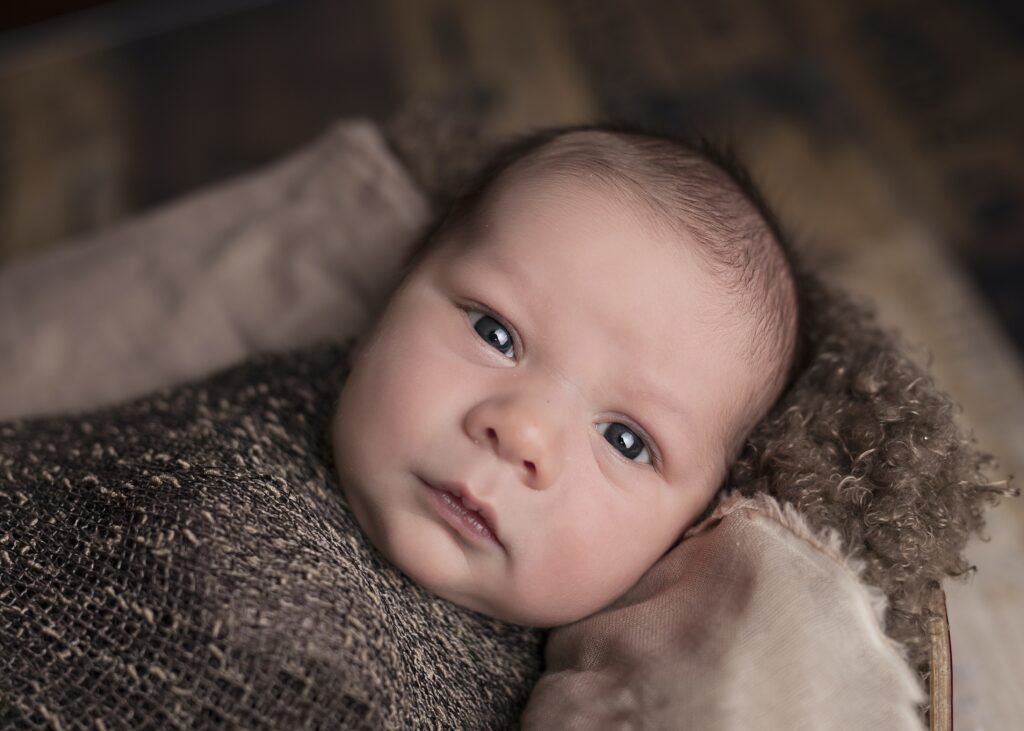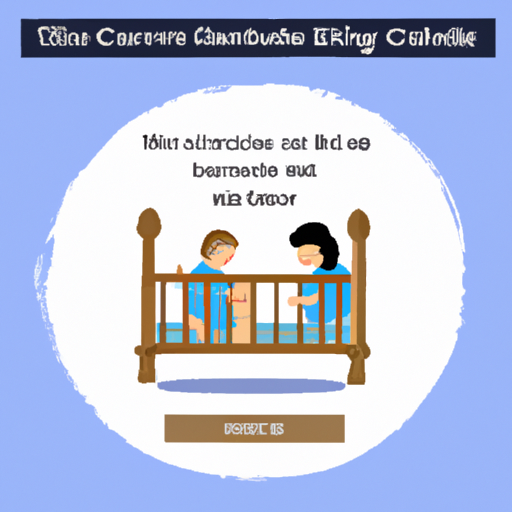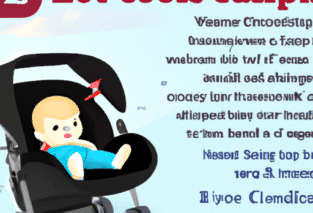In this article, we will be discussing the topic of co-sleeping versus using a crib, and helping you decide which option is the best fit for you and your family. We will explain the pros and cons of each, as well as provide some considerations to keep in mind when making this important decision. By the end of this article, you will have a better understanding of both co-sleeping and crib options, and be equipped with the information you need to choose what works best for you. Choosing the right sleeping arrangement for your baby is an important decision that every parent faces. Co-sleeping and using a crib each have their own benefits and safety concerns to consider. In this article, we will explore the advantages and disadvantages of both options to help you make an informed choice for your family.

Benefits of Co-Sleeping
Bonding with the Baby
One of the main benefits of co-sleeping is the opportunity to bond with your baby on a deeper level. The close proximity during sleep allows for frequent physical contact, which promotes a strong emotional connection. Many parents also find that co-sleeping enhances their ability to respond quickly to their baby’s needs, such as feeding or comforting.
Easier Nighttime Feeding
Co-sleeping can make nighttime feedings easier and more convenient for both you and your baby. With your baby within arm’s reach, you can respond quickly to hunger cues, making nighttime feedings less disruptive and more efficient. This can also help you get more restful sleep since you don’t have to fully wake up and move to another location to feed your baby.
Promotes Better Sleep for Baby
Babies who co-sleep often experience better sleep patterns. The proximity to their parent’s familiar scent and warmth can help them feel secure and comforted, leading to longer stretches of sleep. Co-sleeping can also help regulate a baby’s breathing and temperature, leading to more restful sleep. Some studies have even shown that co-sleeping infants have lower levels of stress hormones, which can contribute to better overall sleep quality.
Safety Concerns with Co-Sleeping
While co-sleeping can offer many benefits, it is important to be aware of the potential safety concerns associated with this sleeping arrangement.
Risk of SIDS
One of the most significant safety concerns with co-sleeping is the increased risk of Sudden Infant Death Syndrome (SIDS). The American Academy of Pediatrics advises against bed-sharing with infants under one year of age due to the potential for accidental suffocation or strangulation. Babies can become trapped in bedding or pressed against pillows or adults during sleep, increasing the risk of SIDS.
Potential for Suffocation
Another safety concern is the potential for suffocation when co-sleeping. Soft mattresses, loose bedding, and pillows can pose a suffocation hazard for infants. Additionally, parents who are heavy sleepers or under the influence of alcohol or drugs may unknowingly roll onto their baby during sleep, putting them at risk of suffocation.
Bed Sharing vs. Room Sharing
It’s essential to distinguish between bed sharing and room sharing when considering co-sleeping. Room sharing, where the baby sleeps in their own crib or bassinet in the parent’s room, is generally considered safer than bed sharing. It allows for close proximity and bonding while still providing a separate sleep surface for the baby. This arrangement reduces the risk of accidental suffocation or strangulation associated with bed sharing.

Choosing the Right Crib
If you opt for crib sleeping, it’s important to choose the right crib for your baby’s needs. There are various types of cribs available, and certain factors should be considered to ensure safety and comfort.
Types of Cribs Available
Standard cribs are the most popular and commonly used option. They come in various designs and sizes, with adjustable mattress heights to accommodate your growing baby. Other types of cribs include convertible cribs that can convert into a toddler bed, daybed, or full-size bed, and portable cribs that are lightweight and easy to transport.
Considerations for Safety
When choosing a crib, safety should be the top priority. Look for cribs that meet the safety standards set by the Consumer Product Safety Commission (CPSC) and have a sturdy construction. Ensure that the slats are spaced correctly to prevent your baby from getting stuck or escaping. Additionally, avoid cribs with drop sides, as they have been banned due to safety concerns.
Features to Look for
Certain features can enhance the functionality and safety of a crib. Look for cribs with adjustable mattress heights, as this allows you to lower the mattress as your baby becomes more active and mobile. A teething rail can protect your baby’s gums and the crib from damage. Consider cribs with wheels for ease of movement, and ensure that they have strong locking mechanisms to prevent accidental rolling.
Advantages of Using a Crib
While co-sleeping has its benefits, using a crib also offers advantages for both your baby and yourself.
Promotes Independence
Using a crib helps promote your baby’s independence and ability to self-soothe. Sleeping in their own space can teach babies to fall asleep and stay asleep on their own, and develop healthy sleep habits. As they grow older, babies who have been accustomed to sleeping in a crib may transition more easily to a toddler bed or their own room.
Creates a Sleep Routine
A crib can provide a structured environment for sleep by establishing a consistent sleep routine. This routine can include bedtime rituals such as reading a story or singing a lullaby, signaling to your baby that it’s time for sleep. Consistency is crucial for establishing healthy sleep patterns, and a crib can help facilitate this daily routine.
Less Disruption for the Parents
Using a crib can provide parents with their own sleep space and reduce potential disruptions. When a baby is in their own crib, parents are less likely to be disturbed by their movements and sounds during sleep. This separation can promote better rest for everyone in the household and allow parents to recharge during the night.

Co-Sleeping vs. Crib: Factors to Consider
The decision between co-sleeping and using a crib is a personal one that depends on various factors. Consider the following elements when making your choice:
Parent’s Sleeping Habits
Consider your own sleeping habits and comfort level when deciding between co-sleeping and using a crib. If you are a light sleeper who is easily disturbed by a baby’s movements or sounds, a crib might be a better option for you. On the other hand, if you prefer the close proximity and convenience of co-sleeping, it can be a suitable choice.
Baby’s Age and Development
The age and developmental stage of your baby can also play a role in your decision. Newborn babies who require frequent nighttime feedings may benefit from co-sleeping, as it allows for easier access to breast or bottle feedings. However, as babies grow and become more mobile, a crib can provide a safer sleep environment.
Space Constraints in the Bedroom
Consider the space available in your bedroom when deciding between co-sleeping and crib sleeping. If your bedroom is small and already crowded, fitting a crib may be challenging. In such cases, co-sleeping with a sidecar sleeper or bassinet attached to the bed may be a suitable solution.
Tips for Successful Co-Sleeping
If you decide to co-sleep, it’s important to create a safe sleep environment for your baby. Follow these tips for successful co-sleeping:
Provide a Safe Sleep Environment
Ensure that your bedding is minimal and free from pillows, blankets, or stuffed animals that can pose a suffocation risk to your baby. Use a firm mattress and fitted sheet designed for infant sleep. Avoid using soft or loose bedding that can cover your baby’s face.
Establish a Bedtime Routine
Establishing a consistent bedtime routine can help signal to your baby that it is time for sleep. This routine can include a warm bath, a soothing massage, or reading a bedtime story. The repetition of these activities can help your baby associate them with sleep and promote a calm atmosphere.
Set Boundaries for Safety
Set clear boundaries to ensure that your baby sleeps in a safe area. Avoid placing your baby between yourself and your partner or using large and fluffy pillows that can cover your baby’s face. Consider using a bassinet or sidecar sleeper that attaches securely to your bed, providing a separate sleep surface for your baby.

Tips for Using a Crib Effectively
If you choose to use a crib, follow these tips to ensure safe and effective crib sleeping:
Choose the Right Mattress
Select a firm crib mattress that fits snugly into the crib frame. The mattress should not have any gaps or spaces between it and the crib, as this can pose a trapping hazard for your baby. Avoid using additional padding or soft mattress toppers, as they can increase the risk of suffocation.
Ensure Proper Crib Placement
Place the crib away from windows, curtains, and cords to prevent any potential hazards. Keep the crib away from heaters, air conditioners, or other temperature control devices to maintain a comfortable sleep environment for your baby. Make sure the crib is secure and stable, with all screws and bolts tightened.
Use Appropriate Bedding
Use fitted crib sheets that are specifically designed for crib mattresses. Avoid using loose or oversized bedding that can pose a suffocation risk. Blankets and pillows should not be used for babies under one year of age. Instead, consider using a sleep sack or wearable blanket to keep your baby warm.
When to Transition from Co-Sleeping to a Crib
The decision to transition from co-sleeping to a crib is a personal one that depends on the readiness of both you and your baby. Consider the following factors when determining the appropriate time for the transition:
Baby’s Age and Developmental Milestones
Most experts recommend transitioning from co-sleeping to a crib between four to six months of age. At this stage, babies are more aware of their surroundings and have better head control, reducing the risk of accidental suffocation. However, every baby is different, so it’s important to consider your child’s individual milestones and development.
Signs of Readiness for Transition
Look for signs that your baby is ready to transition to a crib. These signs can include rolling over consistently, showing increased curiosity about their surroundings, or exhibiting signs of discomfort or restlessness during co-sleeping. These indications suggest that your baby may be ready for more independent sleep in a crib.
Gradual Approach to Transitioning
Transitioning from co-sleeping to a crib can be challenging for both you and your baby. Take a gradual approach by starting with nap times in the crib before transitioning to nighttime sleep. This gradual adjustment will help your baby become familiar with the new sleep environment and ease the process of transitioning.

Potential Challenges of Transitioning
Transitioning from co-sleeping to a crib can present some challenges that both parents and babies may face. Consider the following challenges and ways to overcome them:
Separation Anxiety
Babies who are used to co-sleeping may experience separation anxiety when transitioning to a crib. To help alleviate this, establish a consistent bedtime routine and provide comfort through soothing techniques such as gentle touch or soft music. Stay calm and patient during the transition, offering reassuring words and a comforting presence.
Adjustment Period for Both Parent and Baby
Both you and your baby will need time to adjust to the new sleeping arrangement. Expect some initial resistance and potential disruptions to sleep during the transition period. To ease the adjustment, maintain a consistent sleep schedule and provide a comforting and familiar sleep environment in the new crib.
Implementing Consistent Sleep Schedule
Transitioning from co-sleeping to a crib can be an opportunity to establish a consistent sleep schedule for your baby. Implement a set bedtime routine and stick to it, even during the transition. Consistency is key in helping your baby establish healthy sleep habits and adjusting to the crib.
Conclusion
When it comes to choosing between co-sleeping and using a crib, it is important to consider your individual circumstances, as well as the safety and comfort of your baby. Co-sleeping offers bonding and easier nighttime feeding, but safety concerns such as the risk of SIDS and suffocation must be carefully considered. Using a crib promotes independence and creates a sleep routine, but requires a separate sleep space and may involve challenges during the transition from co-sleeping.
Ultimately, the choice between co-sleeping and crib sleeping is subjective and depends on what works best for your family. Consider the benefits and safety concerns of each option, and choose the one that aligns with your parenting style, living situation, and the needs of your baby. Remember, every family is unique, and there is no one-size-fits-all solution.





